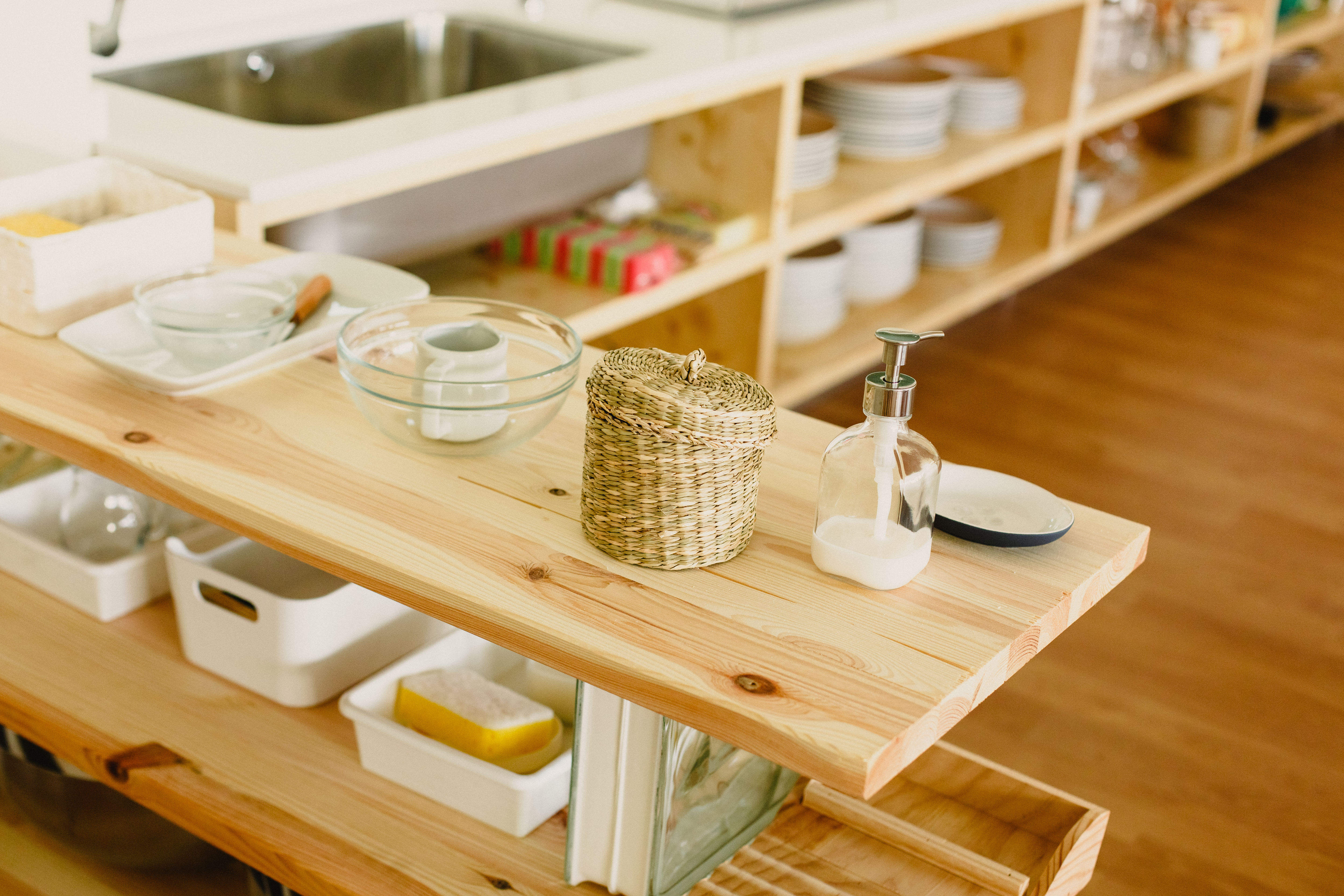
Our center is a member of the American Montessori Society (AMS) and our teachers are Montessori certified teachers.
The curricular areas of our Montessori Primary Houses
Practical life activities
Throughout the sequence of practical life activities, there is an emphasis on positive social behaviors, self-care, care of the environment and consideration of others.
One of the goals of our program is for children to demonstrate respect for themselves, their environment en consideration for others.
Within the scope of early practical life activities, some of the tasks children engage in include pouring from one pitcher to another; completing simple dressing activities (buttoning, buckling) ; courtesy and grace; self-care tasks such as hanging and folding clothes; and movement tasks such as lifting and carrying a tray, dusting.
As children become more familiar with their Montessori environment, they progress to more advanced practical life activities such as polishing and cleaning different surfaces, being silent, greeting people, handling a book, using more difficult dressing frames such as tying and lacing, and simple cooking.
Once children progress into the upper age of the mixed -age group of their Primary House, practical life activities include caring for the environment, serving snack and meals, comforting younger children and ultimately presenting early practical life activities to new children.
Sensorial activities
Sensorial activities are designed to awaken and train children’s senses.
Activities in the early sensorial domain include exploring size and dimension with cylinder blocks, working with the pink tower (solid blocks in successively smaller units), using geometric solids, sound boxes, and bells tuned in a scale, and working with cubes and numeric rods.
More advanced sensorial experiences include exploring a square of Pythagoras; using smelling jars and tasting cups; performing advanced sound work; discriminating a variety of fabrics by touch; exploring a mystery bag and other blindfolded discrimination work; and ultimately presenting early sensorial activities to younger children.
Even in the earliest sensorial activities, children learn to identify shape, order, size and volume. These tasks are the groundwork for later more advanced mathematical, logical and spatial thoughts.
Cultural activities
Within the culture area, children explore concepts such as land and water formations, maps, classification pictures, past and present, plant life cycles, geography and civilization studies. This area of study instills in our students a respect for the environment and humankind.
One of the highlights of the cultural activities of our Primary Houses is the special Continent Study & Cultural Sharing.
Language activities
The task of mastering language (in all its forms) is a major developmental endeavor of the young child.
At L’Enfant , children evolve in a bilingual environment with most activities taking place in a full French immersion setting.
As a result, language activities occupy a prime place in the life of our students. Language activities in our Primary houses begin with exploring pictures, books and sounds. Later, language experiences progress to exploring the written word through tracing sandpaper letters and metal shape insets and eventually to manipulating and outlining movable alphabets letters to make words and sentences.
These language activities ultimately culminate at the end of the Primary cycle in the child’s ability to write down thoughts and to read and understand the writings of others.
Children also explore the world of theater through the preparation of their yearly music and drama performance.
Mathematics
Several of the explorations with sensorial activities such as geometric solids and sequential blocks build a conceptual foundation for later more abstract mathematical skills.
Planning that builds earlier experiences as a foundation for later, more complex tasks is seen throughout our Montessori curriculum.
As parents usually notice, children embrace naturally activities of sorting, categorizing, quantifying and performing basic arithmetical functions.
These natural tendencies are enhanced through carefully timed introduction of sequential number rods, sandpaper numbers, bean sorting and counting, number cards, memory games using numbers, more complex decimal counting beads, fraction exercises, more complex arithmetical function with beads (subtraction, multiplication, and division) and the use of charts and boards to explore multiplication and division.
Movement and Physical education
Gross- Motor skills are developed through activities including rhythmic music, movement, outdoor play and gardening.
Each day, children move freely around the classroom during their work periods. Movement is an essential component of many of the activities. Students may transition from activity to activity at their own pace, with support from their teacher. Children work on the floor, at tables, standing, and in chairs at different points throughout the day.
Additionally, a special area of each Primary House is dedicated to yoga exercises that children can do as part of their regular Montessori work. Yoga, like Montessori education, is a process of discovery. A mindful, non-competitive exercise, emphasizing movement and breathing and the connection of body and mind, it helps students of any age to understand our own nature and live harmoniously with others.

